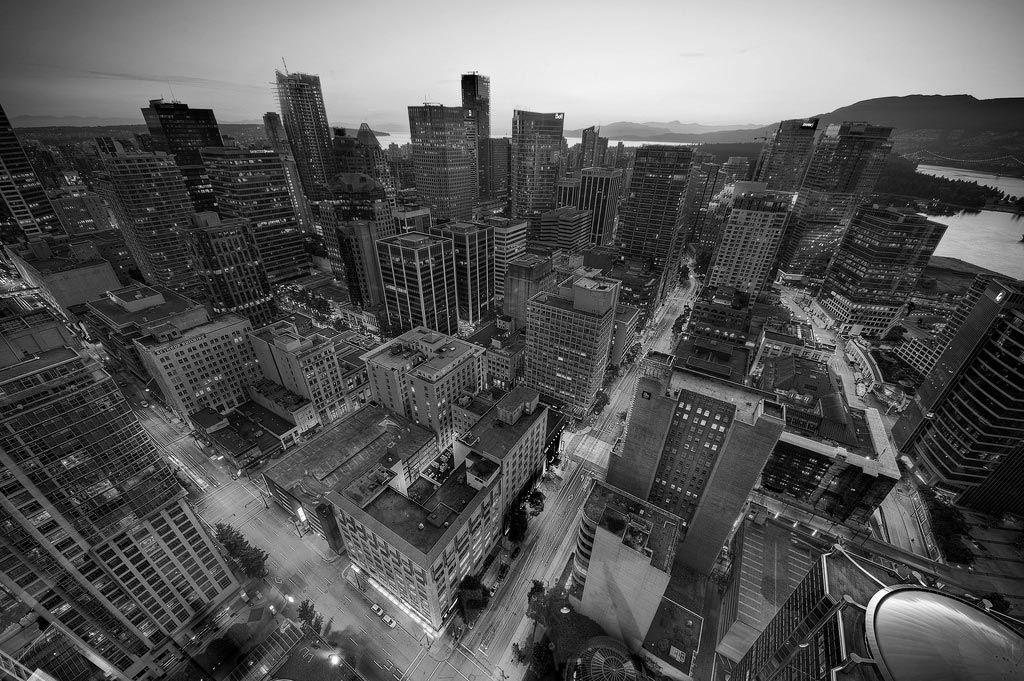Jonathan Glazer’s phenomenal 2013 sci-fi flick Under The Skin does not offer any easy entries. Its immediately disorienting with discordant noises boiling on the soundtrack and a tiny dot of light emerging after lengthy on screen blackness. The light is revealed to be a blue sun rather than a tunnel —- a sun that eventually morphs into an eyeball. On the soundtrack gurgles scattered broken syllables and random half-spoken words. What is this?
Scarlett Johansson is the only recognizable star in a film populated with real people, non-actors. After brief main titles, the film resumes following a sole motorcyclist speeding along a fog slicked highway. We watch as he pulls a lifeless female body out of the bushes by the side of the road and tosses it into the back of a van. The body is delivered to Johansson’s unnamed character who patiently strips it down (I couldn’t help think Acting Exercise) and changes into its clothes. A single tear emerges from the naked, unmoving body. Scarlett’s character leaves it, and proceeds to drive the van around downtown Glasgow, Scotland.
Glazer asks us to watch in silence as Johanssons’ character goes about her day. We see her shop, apply lipstick, wrap up in a fur jacket and hit the town. But something is off. What’s happening behind her eyes? She contemplates the world like a predator overseeing a vulnerable herd. We realize she only focuses on young men walking alone. Once she starts talking with them, something shifts in her face and she becomes preternaturally flirtatious in a way that feels suspicious and subversive, not inviting. In a smash cut, her first passenger disappears without so much a second thought eclipsing her face and she’s back at it. We watch her pull over for another young man who happily hops in shotgun with this beautiful stranger. We watch as she takes him to an abandoned building just outside of town. He follows her, not into a darkened bedroom, but a shapeless void of unusual blackness. But he only sees her and the striptease she offers him, ignoring the unusual space. The oily black mass of the floor consumes him. Yes, he’s been led into a trap. Yes, its all bad. No, you aren’t ready for what happens beneath the floor.
The chilling sequence that follows, unfolding in silence on the beach, is a stunner. Johansson patiently awaits a lone surfer to return from aggressive waves. He does, but something unexpected happens to a couple picnicking further down the beach and everything suddenly changes. The unease that evolves just in watching that sequence is harsh. Afterwards, even her character no longer seems clear of what to do with her self, her body.
Later, she flags down a man in a hoodie walking alone at night. Hesitantly, he gets in. He, like Johansen’s character, is different—an outsider. He removes his hoodie and quietly reveals himself. She doesn’t see or treat him as other people might. Unlike with the previous strangers, these two find a way to reach one another and communicate. Is she performing for him differently than she did with the others? Somethings changed– particularly after her encounter on the beach. Notice how, after their encounter, it’s the first time she stops and truly takes a look at herself. What is she seeing? Who is she really? That meeting is crucial. After that point in the story, she flies off the rails, literally losing herself in the fog and losing contact with the mysterious cyclist.
Years ago, a coworker put Michel Faber’s fine book into my hands, so I kind of knew what to expect even as I was surprised to see it made into a movie at all. The film and book differ slightly, yet still compliment one another. The book is more straightforward regarding its lead character, named Isserley, and her work driving through Scotland picking up random men before deciding to sedate them through a vial hidden in the seat. In this adaptation, Johansson’s unnamed lead being an alien is inferred just through behavior and performance. She’s a predator, no doubt. The ending, when the tables get turned on her, was frightening and nearly unwatchable when I thought I knew where it was going. I didn’t see it coming. When the film finally revealed its hand I was held breathless. I’d never seen anything balanced so evenly between being so disturbing and beautiful.
My first time watching this floored me. I couldn’t totally walk away after the end credits. I needed to talk about it, think about it, interrogate it as much as re-watch it. I was surprised to learn the men she picks up are real and the van is loaded with hidden cameras. For me, a great film features at least one solid performance anchoring a couple of scenes that could stand alone as powerful short films. Skin boasts a half dozen hypnotic and powerful scenes. Johansson throughout her career has always been watchable and engaging. But she is selfless and brave here, in a way that feels focused and experimental. She’s appropriately muted, her performance more haunted than awkward. Cynically, I could say watching Johansson is tantamount to watching a series of acting exercises. On a deeper level, that’s the whole point of the film. Doesn’t being human entail performing for people in certain environments? Who do you become when you want to get under someone’s skin?

